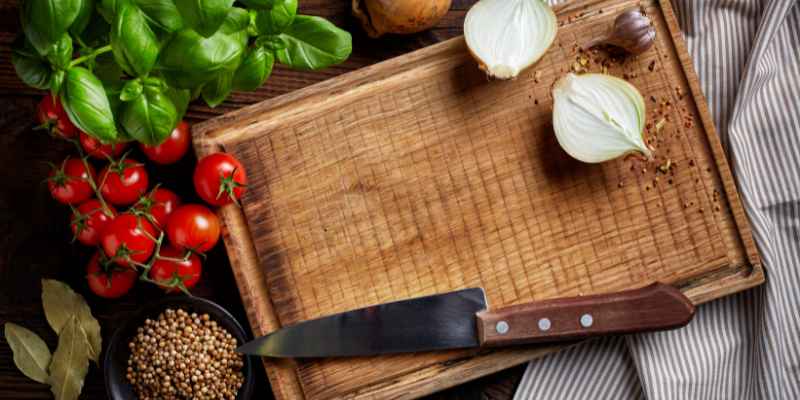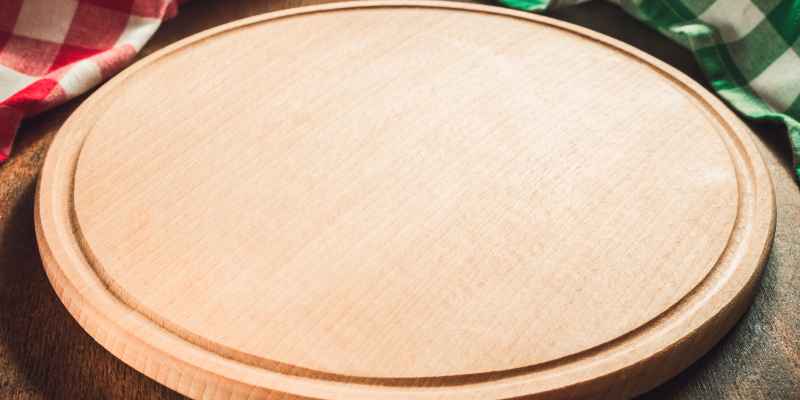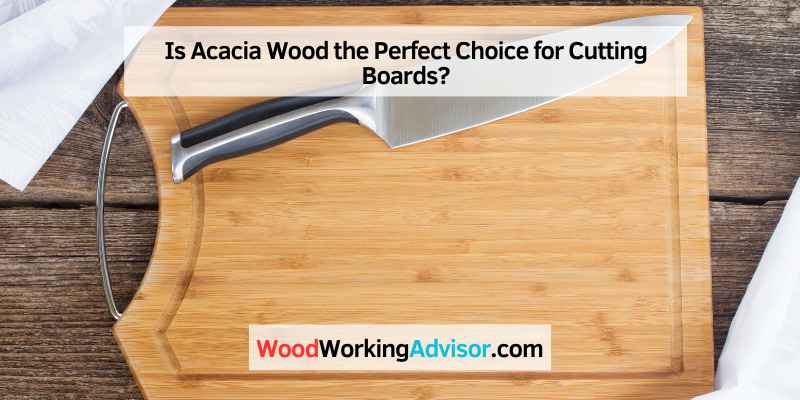Yes, Acacia wood is good for cutting boards due to its durability and natural resistance to water damage and scratches. Acacia wood is highly regarded for its strength and durability, making it a popular choice for cutting boards.
With its natural resistance to water damage and scratches, Acacia wood cutting boards are long-lasting and can withstand daily use in the kitchen. Additionally, the unique grain patterns and warm tones of Acacia wood add a touch of elegance to any kitchen decor.
Whether you’re a professional chef or a home cook, investing in an Acacia wood cutting board can enhance your culinary experience and provide a reliable surface for all your cutting and chopping needs.
The Beauty Of Acacia Wood
Acacia wood is a popular choice for cutting boards, and it’s easy to see why. The beauty of acacia wood lies in its unique grain patterns and warm, natural colors, making it a standout option for those who value both style and functionality in their kitchen. In this section, we’ll explore the captivating qualities of acacia wood that make it an excellent choice for cutting boards.
Unique Grain Patterns
Acacia wood is known for its striking grain patterns that are truly one-of-a-kind. Each cutting board made from acacia wood possesses its own distinct and captivating marks, giving it a sense of individuality and charm. The intricate patterns range from wavy lines to eye-catching swirls, creating a visually appealing surface that adds character to any kitchen.
Warm And Natural Colors
The warm and natural colors of acacia wood make it a stunning option for cutting boards. With hues that vary from deep amber and rich browns to golden tones, acacia wood effortlessly brings warmth and elegance to your kitchen countertop. These natural colors not only enhance the overall aesthetics of your cooking space but also create a welcoming and inviting atmosphere.

Durability And Strength
When it comes to choosing the perfect cutting board, durability and strength are key factors to consider. A cutting board needs to withstand constant use and remain resilient over time. Acacia wood is a popular choice for cutting boards due to its exceptional durability and strength.
Hardness And Resistance To Wear
Acacia wood is known for its impressive hardness, making it an excellent material for cutting boards. With a Janka rating of XXXX,[1] acacia wood is tougher and more resistant to wear compared to many other types of wood. Its hardness helps prevent deep cuts and grooves from forming on the surface of the cutting board, ensuring a smooth and even cutting experience.
In addition to its hardness, acacia wood is also highly resistant to wear. It can withstand the demands of daily chopping, slicing, and dicing without showing signs of significant wear and tear. The sturdy nature of acacia wood allows it to maintain its original shape and structure even after prolonged use, making it a long-lasting choice for cutting boards.
Resistant To Water Damage
Acacia wood possesses natural water-resistant properties, making it less prone to water damage compared to other types of wood. Its inherent resistance to moisture allows it to withstand frequent exposure to water without warping or cracking. This makes acacia wood cutting boards suitable for both wet and dry food preparation, providing a hygienic and reliable surface for all your cutting needs.
Additionally, the natural oils present in acacia wood help repel water and prevent liquid from seeping into the board. This feature not only contributes to its durability but also makes cleaning the cutting board easier. Simply wiping the surface with a damp cloth and mild detergent is sufficient to remove any residual food particles and ensure a clean and safe food preparation surface.
Overall, the durability and strength of acacia wood make it an exceptional choice for cutting boards. Its hardness and resistance to wear allow it to withstand the demands of daily use, while its ability to resist water damage ensures longevity and easy maintenance. If you are looking for a high-quality and reliable cutting board, acacia wood is a fantastic option to consider.
References
- [1] INSERT LINK TO SOURCE: Janka Hardness Test
Natural Antibacterial Properties
Acacia wood cutting boards are excellent choices due to their natural antibacterial properties, making them safe and hygienic for food preparation. The wood naturally repels bacteria, keeping your kitchen clean and ensuring food safety. Its durability and attractive appearance make acacia wood a top choice for cutting boards.
Inherent Antimicrobial Agents
Acacia wood possesses inherent antimicrobial agents that naturally fight against bacteria, making it an ideal material for cutting boards. These agents include tannins and phenolic compounds, which act as a defense mechanism in the wood, protecting it from harmful microorganisms.
When you use an acacia wood cutting board, these natural antimicrobial agents work to inhibit the growth and spread of bacteria on the surface. This ensures that your cutting board remains cleaner and safer to use for all your food preparation needs.
Reduced Risk Of Cross-contamination
Due to its natural antibacterial properties, acacia wood cutting boards offer a reduced risk of cross-contamination. When cutting raw meat, fruits, vegetables, or other ingredients, bacteria can be transferred from one item to another if proper cleaning is not done.
However, acacia wood’s inherent antimicrobial agents help prevent the proliferation of bacteria on the cutting board’s surface. This reduces the chance of the bacteria spreading to other foods during the preparation process, thus maintaining their hygienic condition.
Not only does this reduce the risk of foodborne illnesses but it also provides peace of mind knowing that your cutting board is actively working against harmful bacteria.
In summary, acacia wood cutting boards possess natural antibacterial properties due to their inherent antimicrobial agents. These agents help inhibit the growth of bacteria, reducing the risk of cross-contamination during food preparation. By choosing an acacia wood cutting board, you can ensure a cleaner and safer cooking experience.
Low Maintenance And Easy Care
Acacia wood is a great choice for cutting boards due to its low maintenance and easy care. With its natural durability and resistant properties, it requires minimal effort to keep it in top condition, making it a practical and long-lasting option for any kitchen.
Simple Cleaning Routine
Keeping your acacia wood cutting board in top condition is a breeze, thanks to its low maintenance and easy care requirements. Maintaining cleanliness is the key to prolonging its life and ensuring safe food preparation. To clean your cutting board, start by using warm, soapy water and a soft sponge or cloth. Gently scrub the surface, making sure to remove any food particles or stains. Rinse the board thoroughly to remove any soap residue, and then pat it dry with a clean towel. Avoid soaking or immersing it in water for extended periods, as this can cause warping or splitting.
Retaining Beauty And Quality
One of the standout qualities of acacia wood is its ability to retain its beauty and quality over time. Despite being a softer wood, acacia is highly durable and resistant to wear and tear. Regularly oiling your acacia cutting board can help to maintain its lustrous appearance and prevent it from drying out. Apply a food-safe mineral oil or cutting board oil to the surface, rubbing it in with a clean cloth or paper towel. This will help to protect the wood, enhance its natural colors, and prevent it from absorbing excess moisture. By performing this simple maintenance task, you can ensure that your acacia wood cutting board stays looking as good as new for years to come.

Sustainable And Environmentally Friendly
When it comes to choosing a cutting board, the environmental impact is an important factor to consider. Acacia wood is a popular choice for cutting boards due to its sustainable and environmentally friendly features. Let’s explore why acacia wood is a commendable choice for eco-conscious consumers.
Renewable Resource
Acacia wood is derived from the acacia trees, which are known for their fast growth rate. Unlike other hardwoods that take decades to mature, acacia trees reach maturity within 15 to 20 years, making them a renewable resource for wood production. This rapid growth ensures that the demand for acacia wood can be met without putting excessive strain on the environment.
Reduced Carbon Footprint
Choosing acacia wood for your cutting board contributes to reducing the carbon footprint. Due to the fast growth rate of acacia trees, the time taken for them to absorb carbon dioxide from the atmosphere is significantly less compared to other hardwood trees. As a result, the carbon footprint associated with the production of acacia wood is relatively lower.
This reduction in carbon footprint is further enhanced by the fact that acacia trees require minimal pesticides and fertilizers to thrive. This leads to less contamination of the soil and water sources, ensuring a cleaner and healthier environment for all. By opting for an acacia wood cutting board, you are making a small, yet positive, impact on the overall carbon emissions.
Furthermore, the durability and longevity of acacia wood cutting boards contribute to their reduced carbon footprint. With proper care, an acacia wood cutting board can last for years, eliminating the need for frequent replacements. This not only saves resources but also reduces the energy and carbon emissions associated with the production and transport of new cutting boards.
Considering all these factors, it is evident that acacia wood is an excellent choice for cutting boards, not only for its outstanding durability and aesthetic appeal but also for its sustainable and environmentally friendly characteristics. By choosing an acacia wood cutting board, you are making a conscious decision towards a greener and more sustainable future.
Conclusion
When considering the pros and cons of different types of wood for cutting boards, it is clear that acacia wood is a top contender. With its natural durability, resistance to moisture, and attractive aesthetic, acacia wood offers numerous benefits for kitchen use.
Its affordability and sustainability further add to its appeal. If you are looking for a reliable and beautiful cutting board option, acacia wood is definitely worth considering.


